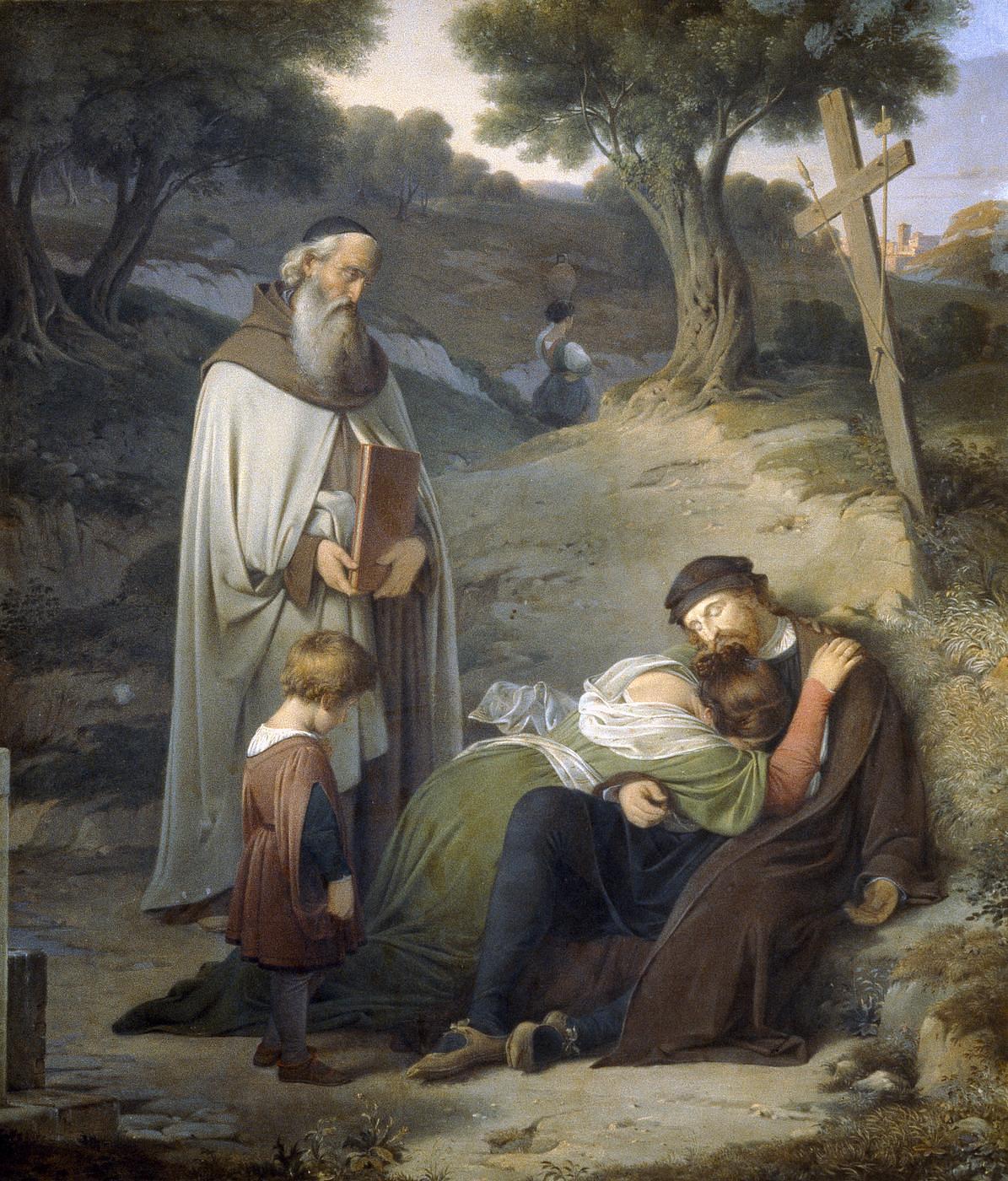
Ubekendt
Ubekendt
-
Albert Küchler
1803-1886
Death of Correggio
Production Date
1834Type of Work / Object
Painting > Historical Painting
-
Location
Inventory Number
B243
Catalogue Number
B243Catalogue Level / Collection
Thorvaldsen's Collections > Collection of Paintings (B)
Explanation
- For once, the motif does not derive from the Bible, but from the Danish poet Oehlenschläger’s tragedy Correggio (1809). The painting represents the scene in the fifth act of the tragedy in which Correggio has overstrained himself by carrying a sack of copper coins and dies. His wife has sent for an old hermit so that her husband can be given extreme unction. But it is too late. He is already dead. The little boy is Correggio’s son Giovanni. Küchler had trained at the Royal Danish Academy of Fine Arts at Copenhagen and arrived in Rome in 1831, where he at first painted genre pictures. The Death of Correggio is historical painting with a secular motif, but it reveals a great sense of the spiritual, religious aspect of the scene by on the one hand omitting the sack of money and on the other emphasising the cross by the roadside. Küchler made contact in Rome with the Nazarenes, whose aim was an art that, as in the Middle Ages, the Renaissance the Baroque, was closely associated with Christianity, society and the whole of life. The Nazarene Overbeck became his great ideal and in time he painted exclusively religious motifs. In 1844 he converted to Catholicism and in 1852 he entered the Order of St Francis. Albert Küchler remained in Rome until his death.
Motif / Theme
Dimension
- Height (ornamental frame) 104 cm
- Height 83.7 cm
- Width (ornamental frame) 92 cm
- Width 74.5 cm
- Depth (ornamental frame) 9.5 cm
Inscription / Certification / Label
A.Küchler 1834Type
Signature
Art Form / Craft
Painting
-
Acquisition Mode
Bequest from Bertel ThorvaldsenAcquisition Date
March 24, 1844